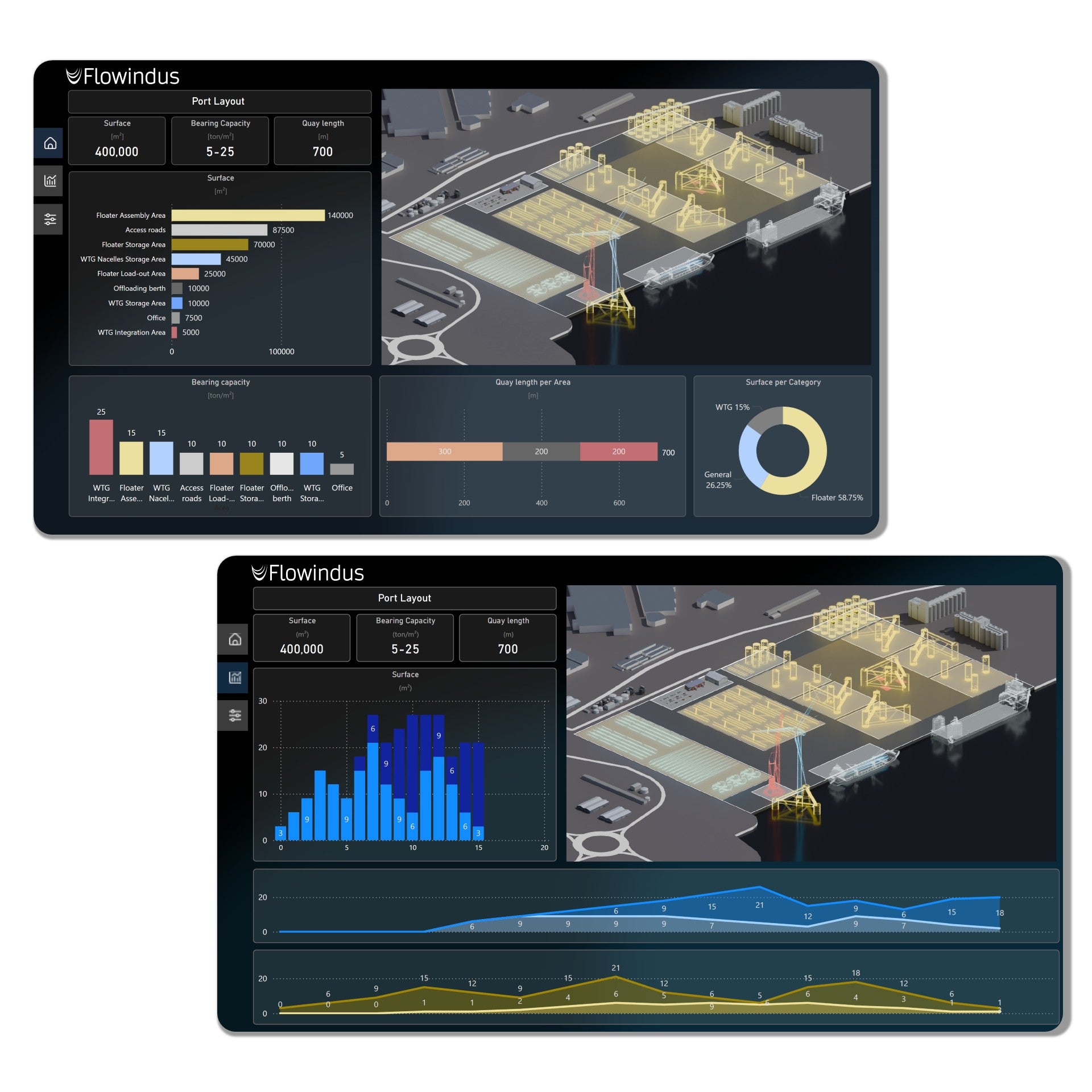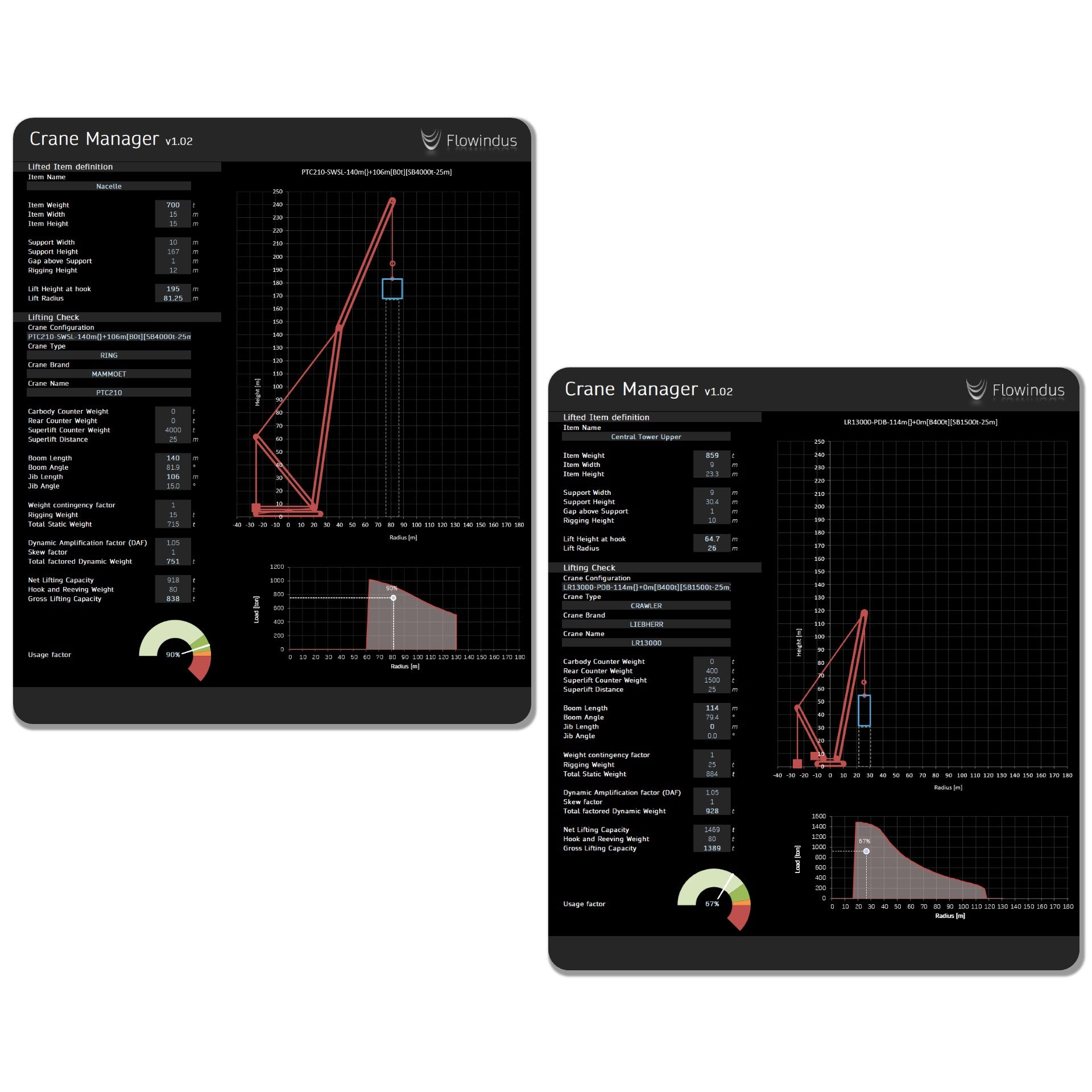The expansion of offshore wind, particularly floating wind, faces significant challenges related to port logistic and industrialization.
Our expertise enables us to assess various execution scenarios to determine the optimal utilization of port infrastructure.
Additionally, we can identify the appropriate solutions for each operation. We develop proprietary tools to evaluate project execution and optimize port layouts.

Port Optimization
We develop internal tools to assess the project execution and to optimize the port layouts and present essential data for project analysis.
We can evaluate different execution scenarios and determine the optimal utilization of port infrastructure.
We create the Port Technical specification report to outline requirements for future offshore wind projects. This includes:
- Port layout and logistics,
- Storage area,
- Quay length,
- Ground bearing capacity,
- List of cranes, vessels, and equipment,
- Water depth and dredging needs,
- Operations description based on floater technology.

Method Engineering
We are able to develop various technical documents for the logistic operations, including:
- Lifting plan,
- Lifting procedure (including sequence and planning),
- SPMT arrangement,
- Load-out procedure (including sequence and planning).
We can also provide assistance with engineering and the development of specific technical solutions, such as launching systems, lifting solutions, and other related needs.
We develop Technical Reports related to the screening and analysis of heavy equipment.
Industrialization analysis
The industrialization sequence for the floaters assembly is crucial to optimize the assembly pace, ensuring a seamless and efficient production process.
We assess the final assembly sequence for the full Floater structure with the following detail:
- Detailed planning schedule,
- Duration and Resource estimation for each task,
- Multi-slots planning with several assembly areas,
- Resource analysis (optimization and occupancy).
We gather timing estimations from different sources and create a input timings matrix to evaluate the more realistic timing for each task of the process.
The objective of this study is also to identify the tools needed to guarantee the execution of the tasks.
We can compare and assess various technologies of floaters and assembly or construction philosophies.
The overall construction planning is also used to provide the inputs for the layout studies (quantity of assembly areas, quantity of stored sub-assemblies).


